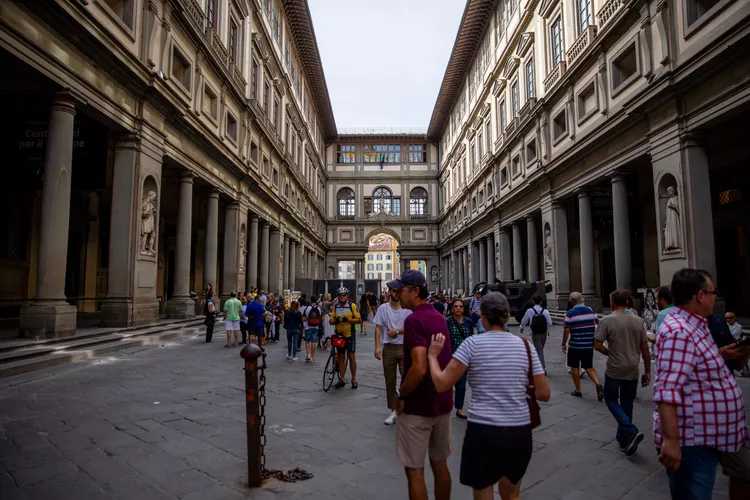1. Introduction
The Uffizi Gallery, or Galleria degli Uffizi, is among the most visited museums in Italy, second only to the Vatican Museums of Rome. It is renowned globally for showcasing Renaissance masterpieces alongside classical sculptures, prints, and drawings.
2. A Rich Collection of Art
This monumental collection includes works from the 12th to the 17th centuries, featuring legendary artists such as Botticelli, Giotto, Michelangelo, Leonardo da Vinci, and Raphael. Displayed in roughly chronological order, the Uffizi’s collection is housed in a U-shaped labyrinth of over 60 halls, each boasting stunning frescoed ceilings. With more than a million yearly visitors, the museum continues to attract art enthusiasts from around the world.
3. Discover the Gallery’s History
The de’ Medici dynasty bequeathed their art and treasures to the state of Tuscany after decades of political and cultural achievements that fueled the Renaissance. This legacy was intended to be a “public and inalienable public good,” designed to beautify the state and attract curiosity from foreigners. The Uffizi, meaning “offices” in Italian, underwent transformation into the grand museum known today.
Commissioned in 1560 by Cosimo I de’ Medici, the Uffizi building originally housed administrative and judicial offices. Construction concluded in 1574, and by 1581, a private gallery was established to display the family’s remarkable collection, further expanded until the dynasty’s closure in 1743.
4. Planning Your Visit to the Uffizi
Due to its popularity, planning ahead for your visit to the Uffizi is essential. Recently, bureaucratic changes have altered how information and ticketing are managed, leading to a simplified official website lacking comprehensive details previously offered.
5. Useful Resources for Visitors
For additional information, consider visiting Uffizi.org, a non-profit resource established by friends of the Uffizi. This site offers vital information about the museum’s history, organization, museum hours, and admission details, assisting potential visitors in planning their trips effectively.
6. Uffizi Gallery Highlights
- Room 2, Tuscan School of the 13th Century and Giotto: Features early Tuscan art, including works by Giotto, Cimabue, and Duccio di Boninsegna.
- Room 7, Early Renaissance: Showcases art from the dawn of the Renaissance by masters such as Fra Angelico, Paolo Uccello, and Masaccio.
- Room 8, Lippi Room: Displays paintings by Filippo Lippi, including a notable “Madonna and Child.”
- Rooms 10–14, Botticelli: Home to iconic allegorical pieces by Sandro Botticelli, notably “The Birth of Venus.”
- Room 15, Leonardo da Vinci: Dedicated to Leonardo’s works and those of his influencers.
- Room 25, Michelangelo: Showcases Michelangelo’s “Holy Family” alongside Mannerist pieces.
- Room 26, Raphael and Andrea del Sarto: Hosts several works from both illustrious artists.
- Room 28, Titian: Focuses on Venetian painting, notably including Titian’s “Venus of Urbino.”
- West Hallway, Sculpture Collection: Home to numerous marble sculptures, including Baccio Bandinelli’s “Laocoon.”
- Room 4 (First Floor), Caravaggio: Displays three famous paintings by Caravaggio and others inspired by his style.
In addition to these highlights, the Uffizi Gallery features masterpieces from notable artists such as Albrecht Dürer, Giovanni Bellini, Pontormo, Rosso Fiorentino, and many others from the flourishing Renaissance era.





